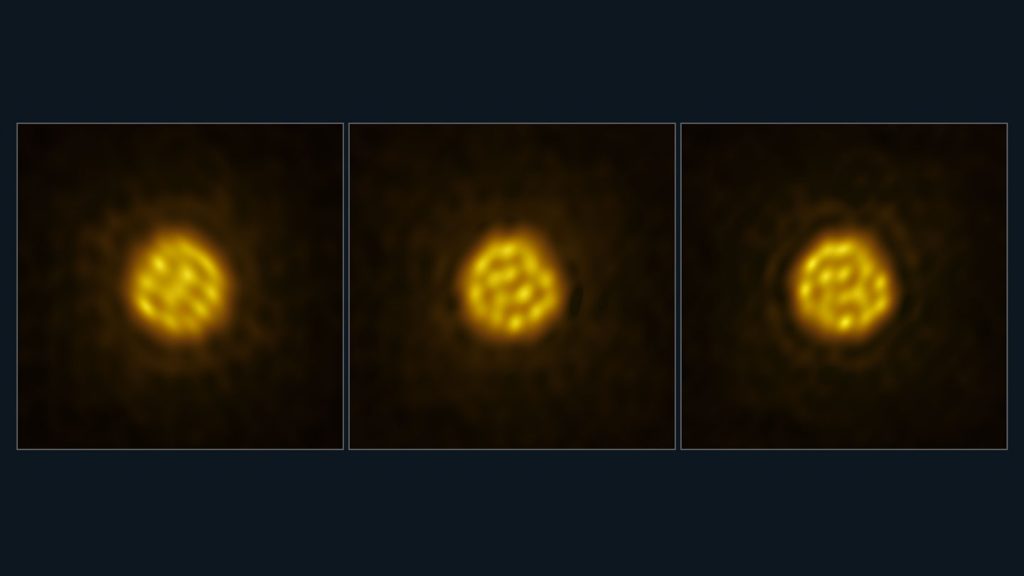Astronomers have observed gas boiling and bubbling on the surface of a distant star for the first time. This observation was made on the red giant star R Doradus using the Atacama Large Millimeter/submillimeter Array in Chile over a period of four weeks in July and August 2023. The images captured by the telescope show large cells of gas rising to the star’s surface and sinking back down, indicating the process of convection that transports heat and energy within stars. This phenomenon is compared to a lava lamp or boiling water by astronomer Wouter Vlemmings of Chalmers University of Technology in Sweden.
These bubbles of gas are a characteristic feature of convection and have been previously observed on other giant stars. However, this is the first time that the speeds and motions of these bubbles have been tracked on a star other than the sun. R Doradus, which is located about 180 light-years from Earth, is a red giant star that is nearing the end of its lifetime. During this phase, the star has expanded to about 350 times the width of the sun, with convective cells on its surface that are enormous in size.
Each of the convective cells on R Doradus spans 75 times the width of the sun and rises and falls within the star at speeds of about 20 kilometers per second, which is significantly faster than what was expected based on the sun’s convection processes. This rapid movement of gas within the star could potentially cause a small fraction of it to escape into space. The observations of these convective processes on R Doradus and other stars could provide valuable insights into the formation of elements that make up stars, planets, and life forms on Earth.
Stardust that eventually becomes new celestial objects largely originates from stars like R Doradus, making it crucial to understand the physics and details of these processes. The study of convective cells on the star’s surface could shed light on the origins of elements crucial for the development of stars, planets, and life. By unraveling these processes, astronomers hope to gain a better understanding of how stars evolve and produce the materials needed for the formation of new celestial bodies.
Observations like these on R Doradus provide valuable information about the behavior of stars in different phases of their evolution. The study of distant stars and their internal processes can offer insights into the fundamental mechanisms that govern the universe’s formation and evolution. By studying the convection processes on stars like R Doradus, scientists aim to broaden their understanding of the physical processes that shape the cosmos and the elements that constitute everything we see in the universe.


